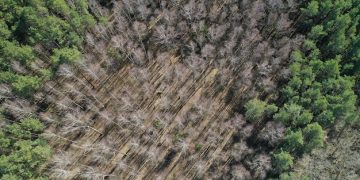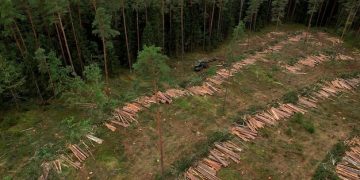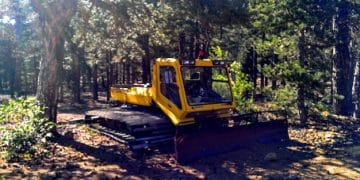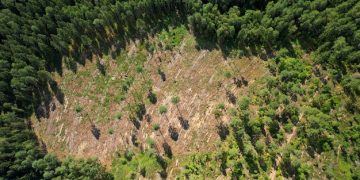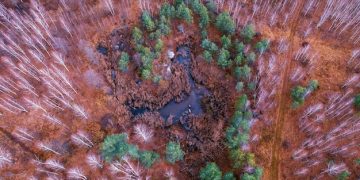Deforestation & Water Quality in US: The Hidden Connection
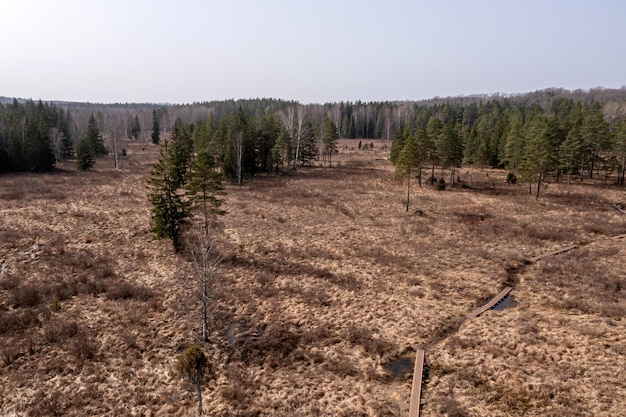
Deforestation significantly impacts water quality in US communities by increasing runoff and erosion, leading to sedimentation, pollution, and compromised aquatic ecosystems, affecting drinking water sources and overall environmental health.
The intricate relationship between deforestation and water quality is a pressing concern for communities across the United States. Understanding this connection is crucial for safeguarding our water resources and ensuring the health of both ecosystems and human populations.
Deforestation’s Impact on US Water Sources
Deforestation, the clearing of forests for other land uses, has far-reaching consequences beyond the loss of trees. One of the most significant is its detrimental effect on water quality. In the US, where forests play a vital role in regulating water cycles and filtering pollutants, deforestation poses a direct threat to the health of our water sources.
When forests are removed, the natural processes that maintain water quality are disrupted. This disruption leads to a cascade of negative effects, impacting everything from drinking water supplies to the delicate balance of aquatic ecosystems.
Increased Runoff and Erosion
Forests act as natural sponges, absorbing rainfall and reducing runoff. Trees intercept precipitation, while their roots bind the soil together, preventing erosion. When deforestation occurs, this protective barrier is removed, leading to increased runoff and soil erosion.
The increased runoff carries sediment, nutrients, and pollutants into waterways, degrading water quality. This can result in sedimentation of rivers and lakes, harming aquatic habitats and reducing water storage capacity.
Sedimentation and Turbidity
Sedimentation, the deposition of eroded soil particles in water bodies, is a major consequence of deforestation-induced erosion. High levels of sediment can increase turbidity (cloudiness) of the water, reducing sunlight penetration and hindering aquatic plant growth.
This, in turn, affects the entire food chain, impacting fish populations and other aquatic organisms. Sediment can also clog waterways, making them less navigable and increasing the risk of flooding.
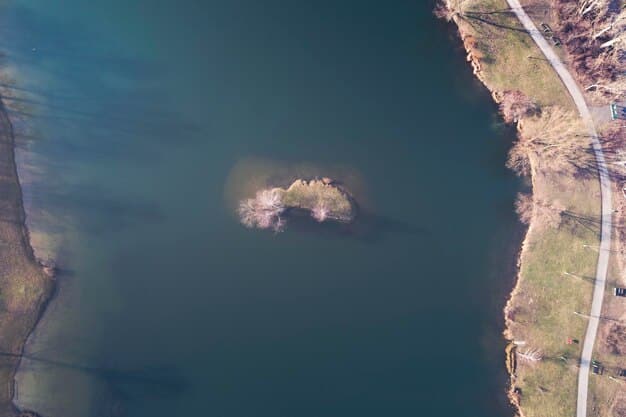
The absence of forest cover accelerates soil erosion, muddying streams and rivers, and disrupting aquatic ecosystems.
Deforestation in the US diminishes the natural filtration provided by forests, leading to contaminated water sources and ecological imbalances.
In summary, deforestation significantly hampers the ability of watersheds to provide clean and reliable water, with far-reaching implications for both human communities and natural ecosystems.
Pollution from Deforested Areas
Beyond erosion and sedimentation, deforestation contributes to water pollution through several mechanisms. The removal of trees can alter nutrient cycles, increase the input of pollutants from agricultural and urban areas, and disrupt the natural processes that break down pollutants.
These factors can lead to a variety of water quality problems, including nutrient pollution, pesticide contamination, and increased levels of pathogens.
- Nutrient Pollution: Deforestation can disrupt nutrient cycles, leading to excessive levels of nutrients like nitrogen and phosphorus in waterways. This can fuel algal blooms, which deplete oxygen and harm aquatic life.
- Pesticide Contamination: Deforested areas are often converted to agriculture, which relies on pesticides. Runoff from these areas can carry pesticides into water bodies, contaminating drinking water supplies and harming aquatic organisms.
- Pathogen Contamination: Deforestation can increase the risk of pathogen contamination from animal waste and human sewage. This can lead to outbreaks of waterborne diseases, posing a threat to public health.
The increase in pollutants due to deforestation impacts the health of people and wildlife, emphasizing the importance of forest conservation.
Altered nutrient cycles, pesticide runoff, and pathogen contamination from deforested areas threaten water supplies and aquatic ecosystems countrywide.
In conclusion, the pollution stemming from deforested areas introduces harmful elements into water systems, creating long-term detrimental effects and health hazards.
Impact on Drinking Water Supplies
The degradation of water quality due to deforestation has direct implications for drinking water supplies. Increased sedimentation, pollution, and nutrient loading can make it more difficult and expensive to treat water for human consumption.
In some cases, deforestation can even lead to the abandonment of water sources, forcing communities to seek alternative supplies or rely on expensive bottled water.
Increased Treatment Costs
Water treatment plants are designed to remove sediment, pollutants, and pathogens from raw water. However, when deforestation leads to increased contamination, treatment costs can skyrocket.
More intensive treatment processes, such as advanced filtration and disinfection, may be required to meet drinking water standards. These processes can be expensive and energy-intensive, placing a burden on water utilities and consumers.
Health Risks
Even with advanced treatment, some pollutants from deforested areas may persist in drinking water. Exposure to these pollutants can pose a variety of health risks, including gastrointestinal illnesses, developmental problems, and even cancer.
Vulnerable populations, such as children, the elderly, and people with compromised immune systems, are particularly at risk.
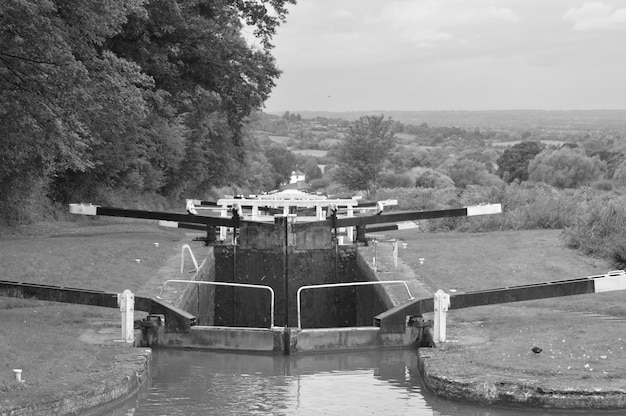
The economic strain combined with health vulnerabilities highlights the critical need that deforestation diminishes the availability of safe drinking water.
Communities face increased treatment costs, potential health risks, and the loss of reliable water sources due to deforestation’s impact.
In summary, deforestation endangers the safety and accessibility of drinking water, necessitating stricter conservation actions and improved water treatment strategies.
Economic Consequences for Communities
The impacts of deforestation on water quality extend beyond environmental and health concerns, also leading to significant economic consequences for communities. These consequences can include increased costs for water treatment, reduced property values, and loss of revenue from tourism and recreation.
Addressing these economic impacts requires a comprehensive approach that considers the value of ecosystem services provided by forests.
- Increased Water Treatment Costs: As mentioned earlier, deforestation-induced water pollution can drive up the costs of water treatment, placing a burden on local economies.
- Reduced Property Values: Water quality is often a key factor in determining property values. When deforestation degrades water quality, property values near affected waterways may decline.
- Loss of Tourism and Recreation Revenue: Many communities rely on tourism and recreation related to water bodies, such as fishing, boating, and swimming. Deforestation can harm these activities, leading to a loss of revenue for local businesses.
The degradation of the natural environment is directly linked with economic loss for towns and cities.
Economic hardship, property devaluation, and revenue loss can be seen throughout communities.
In conclusion, deforestation’s economic fallout underscores the urgent need for sustainable forest management and economic planning to protect both natural resources and community wealth.
Mitigation and Conservation Strategies
Addressing the link between deforestation and water quality requires a multi-faceted approach that includes mitigation and conservation strategies. These strategies can help protect existing forests, restore degraded areas, and promote sustainable land management practices.
Effective mitigation and conservation require collaboration among government agencies, private landowners, and community organizations.
Reforestation and Afforestation
Reforestation, the replanting of trees in deforested areas, and afforestation, the planting of trees in areas that were not previously forested, are key strategies for restoring forest cover and improving water quality.
These activities can help reduce runoff, prevent erosion, and filter pollutants from water.
Sustainable Forest Management
Sustainable forest management practices aim to balance timber harvesting with the long-term health of forests. These practices can include selective logging, reduced-impact logging, and the protection of riparian buffers (vegetated areas along waterways).
By minimizing the impacts of logging on water quality, sustainable forest management can help ensure that forests continue to provide valuable ecosystem services.
Through a balanced approach of replanting, sustainable logging and protection of water areas we can preserve these precious ecosystems.
Reforestation and sustainable practices ensure the ongoing health of forests and the quality of water resources.
In summary, combining forest restoration with responsible forest management practices is vital for securing clear water sources and preserving the integrity of water systems.
Community Involvement and Education
Effective solutions to deforestation and its impact on water quality require active community involvement and education. By raising awareness of the issue and empowering individuals to take action, communities can play a crucial role in protecting their water resources.
Community involvement and education can foster a sense of stewardship and encourage responsible land management practices.
By raising awareness and empowering individuals, communities can drive positive change.
Active participation and understanding are vital for protecting local water resources threatened by deforestation.
Through education and local engagement we will raise the awareness and preservation for a healthier environment as a whole.
| Key Point | Brief Description |
|---|---|
| 🌳 Deforestation & Runoff | Deforestation increases runoff, carrying pollutants into water sources. |
| 💸 Economic Impact | Communities face higher water treatment costs and reduced property values. |
| 🌱 Reforestation | Planting trees can improve water quality by reducing erosion and runoff. |
| 🧑🤝🧑 Community Action | Community involvement protects shared water resources. |
FAQ
▼
Deforestation leads to increased runoff and erosion, which contaminates water sources with sediment and pollutants, making it harder and more expensive to treat water for drinking.
▼
Communities may experience increased water treatment costs, reduced property values, and losses in tourism revenue due to degraded water quality from deforestation.
▼
Yes, reforestation and afforestation can help reduce runoff and erosion, filter pollutants, and restore natural processes that maintain water quality.
▼
Riparian buffers are vegetated areas along waterways that help filter pollutants, stabilize stream banks, and provide habitat for wildlife, improving water quality.
▼
Communities can participate in reforestation efforts, support sustainable forest management practices, educate others, and advocate for policies that protect forests and water resources.
Conclusion
The link between deforestation and water quality in US communities is undeniable. Understanding this connection is crucial for implementing effective mitigation and conservation strategies. By protecting our forests and engaging in responsible land management practices, we can safeguard our water resources and ensure the health and well-being of both present and future generations.
